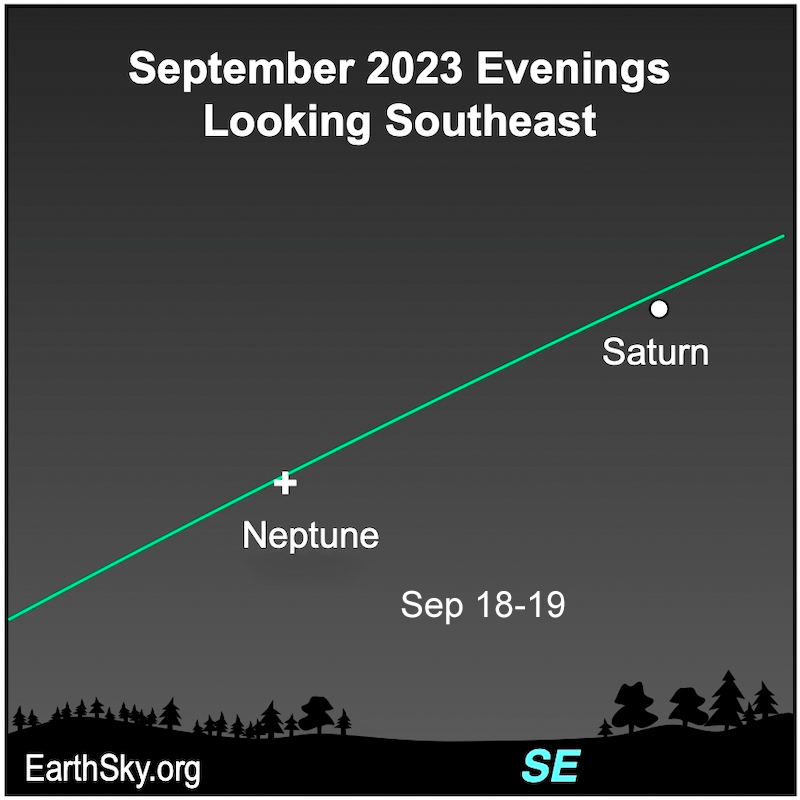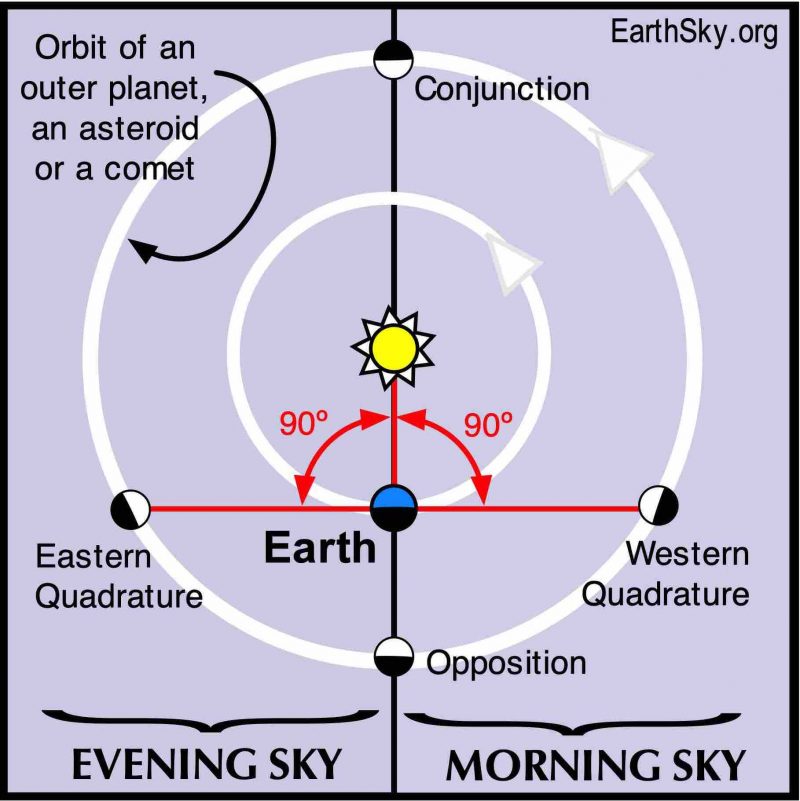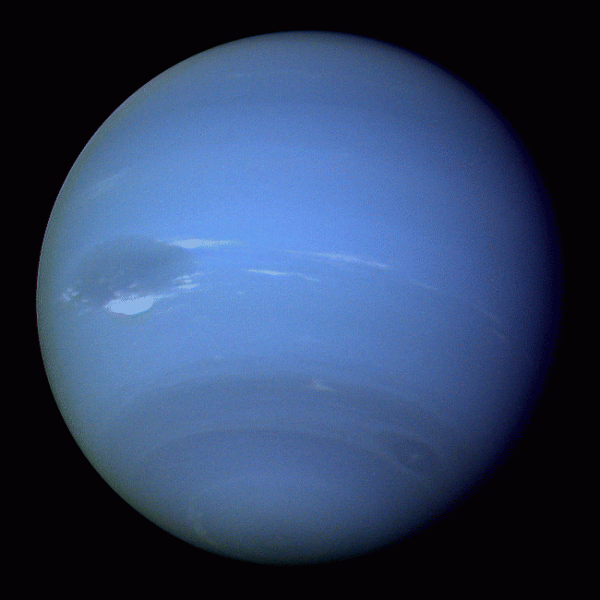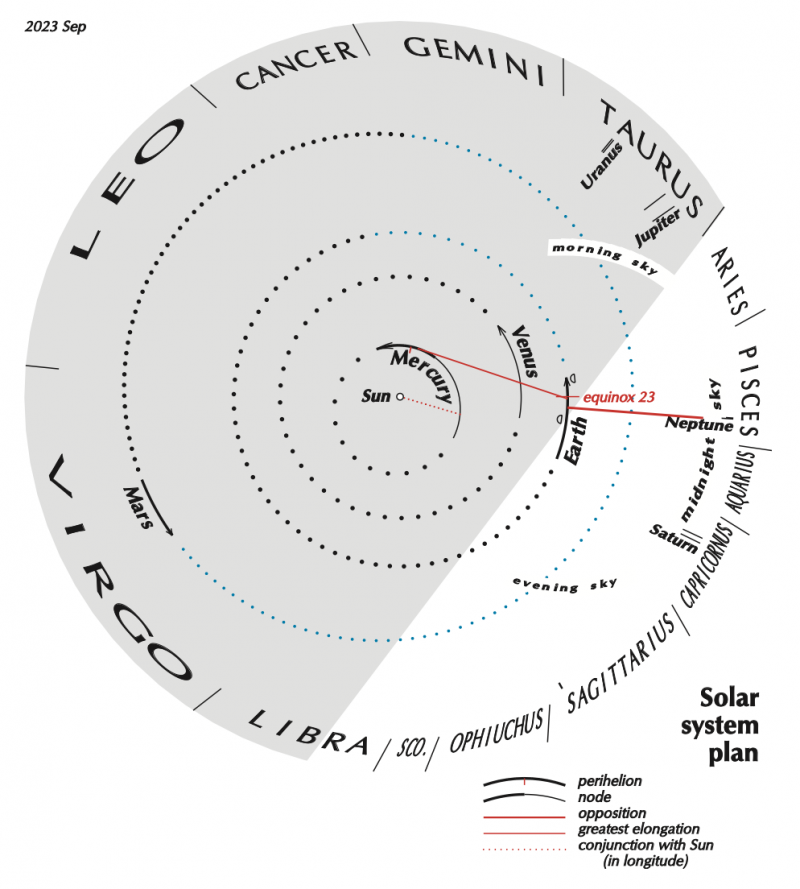
Earth will sweep between the sun and Neptune at 11 UTC on September 19, 2023, placing the distant planet opposite the sun in our sky.
Neptune at opposition in 2023
When and where to watch in 2023: Neptune emerged in the east before sunrise by April 2023 and was visible in good binoculars or a telescope in the morning sky through August. By the time of its September 19 opposition, Neptune is rising in the east at sunset and visible all night. For the rest of 2023, Neptune is up in the evening. It remains visible in good binoculars or a telescope in the evening sky through February of 2024.
Opposition for Neptune will fall at 11 UTC (6 a.m. CDT) on September 19, 2022. To catch it in dark skies, many places should look overnight on September 18-19.
Constellation at opposition: Neptune is in front of the constellation Pisces the Fish.
Brightness at opposition: The 8th planet shines at magnitude +7.8.
Distance from Earth: Neptune is at its least distance from Earth for 2023, 240 light-minutes or 28.9 AU from Earth on September 19.
Through a telescope: Through a telescope, Neptune appears 2.3 arcseconds across. Neptune’s brightest moon, Triton, is visible in medium-size telescopes.
Through binoculars: Through binoculars, Neptune will appear as a star-like object if you know where to find it.
Note: Opposition marks the middle of the best time of year to see an outer planet. Neptune reaches a yearly maximum in brightness at or near opposition. From mid-July to mid-November, Neptune will be at its brightest but it won’t be visible to the unaided eye. Think of us on Earth, sweeping between the sun and Neptune in our smaller, faster orbit. Around the same time as Neptune reaches opposition, it is also making its closest approach to Earth.

For precise sun and Neptune rising times at your location:
Old Farmer’s Almanac (U.S. and Canada)
timeanddate.com (worldwide).
Stellarium (online planetarium program)
In-the-sky’s information with finder chart from your location
How often is Neptune at opposition?
Neptune is the 8th planet from our sun. A year on Neptune is 165 Earth years long. Because Neptune’s orbit around the sun is so gigantic, and because Earth whips around the sun so quickly in comparison, Neptune’s opposition date comes only a few days later each year.
2023 Neptune opposition – September 19
2024 Neptune opposition – September 20
2025 Neptune opposition – September 23
Neptune events in 2023
March 15, 2023: Neptune at solar conjunction
June 30, 2023: Neptune begins retrograde motion
September 1, 2023: Lunar occultation of Neptune
September 19, 2023: Neptune at opposition

View from above the solar system, September 2023

You need optical aid to see Neptune
Planets are brightest when at opposition. But Neptune, the 8th planet, is never truly bright. It’s the only major solar system planet that’s never visible to the unaided eye. This world is about five times fainter than the dimmest star you can see on a moonless night under dark skies. You’ll need binoculars or a telescope for Neptune, plus a detailed sky chart.
Because we’re more or less between Neptune and the sun around opposition, Neptune is rising in the east around the time of sunset, climbing highest up for the night around midnight and setting in the west around sunrise. As viewed from Earth now, this world is in front of the constellation Pisces the Fish and near the planet Saturn.
Even with optical aid, Neptune may look like a faint star. You need to magnify Neptune by about 200 times and have a steady night of seeing to view this distant world as a small disk.
Bottom line: Neptune at opposition – when it’s 180 degrees from the sun on the sky’s dome – comes early on September 19, 2023. You need optical aid to spot it and many places will see it reach opposition overnight on September 18-19.











